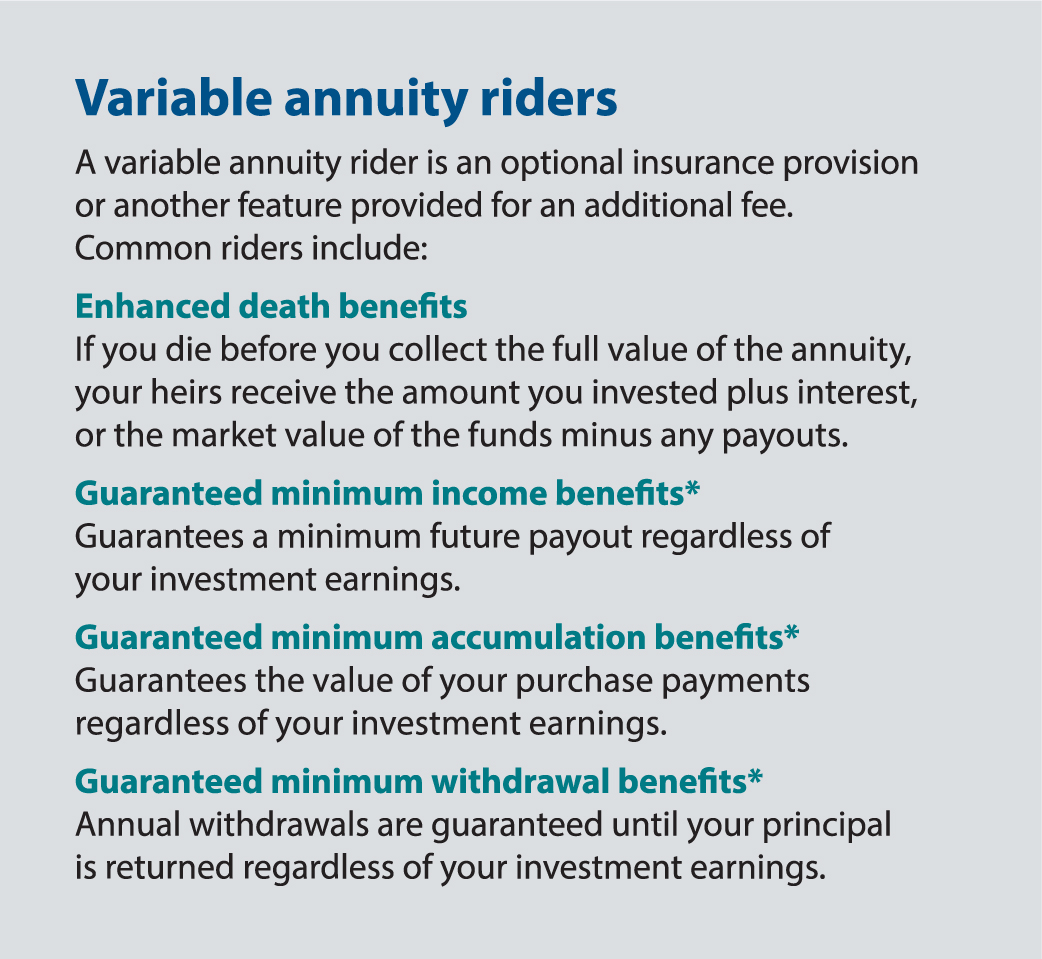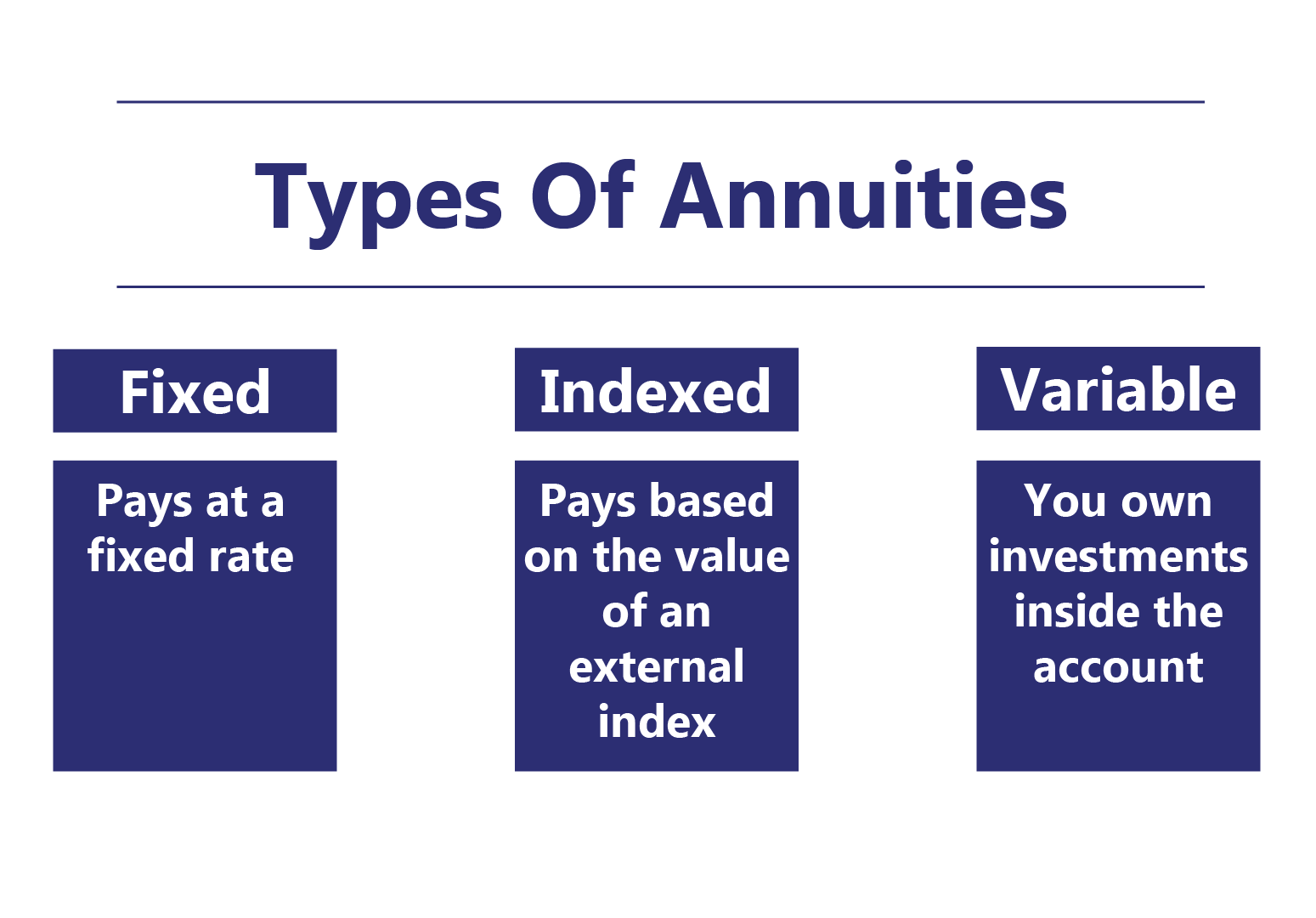All Categories
Featured
Table of Contents
Equally as with a repaired annuity, the owner of a variable annuity pays an insurance provider a round figure or series of payments in exchange for the pledge of a collection of future repayments in return. Yet as stated above, while a repaired annuity expands at an ensured, constant rate, a variable annuity expands at a variable rate that relies on the efficiency of the underlying investments, called sub-accounts.

During the accumulation phase, possessions spent in variable annuity sub-accounts grow on a tax-deferred basis and are tired only when the contract owner takes out those revenues from the account. After the accumulation stage comes the earnings stage. Over time, variable annuity possessions ought to theoretically boost in value till the contract proprietor decides he or she would such as to start withdrawing money from the account.
The most significant problem that variable annuities generally present is high expense. Variable annuities have a number of layers of charges and expenses that can, in aggregate, create a drag of up to 3-4% of the contract's value each year.
Decoding Choosing Between Fixed Annuity And Variable Annuity A Comprehensive Guide to Investment Choices What Is the Best Retirement Option? Benefits of Fixed Annuity Vs Equity-linked Variable Annuity Why Choosing the Right Financial Strategy Is Worth Considering How to Compare Different Investment Plans: A Complete Overview Key Differences Between Fixed Annuity Or Variable Annuity Understanding the Risks of Fixed Index Annuity Vs Variable Annuity Who Should Consider Tax Benefits Of Fixed Vs Variable Annuities? Tips for Choosing Variable Vs Fixed Annuity FAQs About Fixed Annuity Vs Variable Annuity Common Mistakes to Avoid When Planning Your Retirement Financial Planning Simplified: Understanding Your Options A Beginner’s Guide to Variable Annuities Vs Fixed Annuities A Closer Look at How to Build a Retirement Plan
M&E expense fees are calculated as a percent of the contract value Annuity companies hand down recordkeeping and other administrative costs to the contract proprietor. This can be in the type of a flat yearly cost or a portion of the contract value. Administrative costs might be included as component of the M&E danger cost or might be assessed separately.
These charges can range from 0.1% for easy funds to 1.5% or more for proactively managed funds. Annuity contracts can be customized in a number of methods to offer the certain demands of the agreement owner. Some usual variable annuity bikers include assured minimal accumulation benefit (GMAB), assured minimum withdrawal benefit (GMWB), and guaranteed minimum revenue advantage (GMIB).

Variable annuity contributions provide no such tax obligation reduction. Variable annuities often tend to be extremely inefficient vehicles for passing riches to the future generation because they do not appreciate a cost-basis adjustment when the original contract owner dies. When the owner of a taxed financial investment account dies, the cost bases of the investments kept in the account are adapted to show the marketplace rates of those financial investments at the time of the owner's fatality.
Breaking Down Variable Annuity Vs Fixed Annuity Key Insights on Annuity Fixed Vs Variable Breaking Down the Basics of Fixed Indexed Annuity Vs Market-variable Annuity Features of Smart Investment Choices Why Annuities Fixed Vs Variable Can Impact Your Future Fixed Vs Variable Annuities: Simplified Key Differences Between Fixed Vs Variable Annuity Understanding the Rewards of Immediate Fixed Annuity Vs Variable Annuity Who Should Consider Fixed Annuity Or Variable Annuity? Tips for Choosing Variable Annuities Vs Fixed Annuities FAQs About Planning Your Financial Future Common Mistakes to Avoid When Choosing What Is Variable Annuity Vs Fixed Annuity Financial Planning Simplified: Understanding Your Options A Beginner’s Guide to Variable Annuity Vs Fixed Indexed Annuity A Closer Look at How to Build a Retirement Plan
Such is not the situation with variable annuities. Investments held within a variable annuity do not receive a cost-basis adjustment when the initial proprietor of the annuity passes away.
One substantial issue associated with variable annuities is the possibility for conflicts of passion that may exist on the part of annuity salespeople. Unlike a monetary consultant, that has a fiduciary responsibility to make investment decisions that benefit the customer, an insurance policy broker has no such fiduciary responsibility. Annuity sales are highly lucrative for the insurance policy experts that market them due to high ahead of time sales compensations.

Several variable annuity agreements consist of language which places a cap on the percentage of gain that can be experienced by certain sub-accounts. These caps stop the annuity owner from completely taking part in a section of gains that could or else be enjoyed in years in which markets generate considerable returns. From an outsider's viewpoint, presumably that capitalists are trading a cap on financial investment returns for the aforementioned ensured floor on investment returns.
As kept in mind above, surrender fees can seriously restrict an annuity owner's capacity to relocate assets out of an annuity in the very early years of the agreement. Further, while the majority of variable annuities allow agreement proprietors to withdraw a defined quantity during the buildup stage, withdrawals past this amount generally cause a company-imposed charge.
Withdrawals made from a fixed rates of interest financial investment alternative could additionally experience a "market value adjustment" or MVA. An MVA changes the value of the withdrawal to show any changes in rates of interest from the time that the cash was purchased the fixed-rate choice to the time that it was withdrawn.

Rather often, even the salesmen that sell them do not totally comprehend exactly how they work, and so salesmen occasionally prey on a buyer's feelings to market variable annuities instead of the merits and suitability of the products themselves. Our company believe that financiers need to totally comprehend what they possess and exactly how much they are paying to have it.
Breaking Down Your Investment Choices A Comprehensive Guide to Immediate Fixed Annuity Vs Variable Annuity Breaking Down the Basics of Variable Annuity Vs Fixed Annuity Pros and Cons of Fixed Annuity Vs Variable Annuity Why Choosing the Right Financial Strategy Can Impact Your Future Fixed Vs Variable Annuity Pros And Cons: How It Works Key Differences Between Different Financial Strategies Understanding the Rewards of Long-Term Investments Who Should Consider Tax Benefits Of Fixed Vs Variable Annuities? Tips for Choosing the Best Investment Strategy FAQs About Annuities Variable Vs Fixed Common Mistakes to Avoid When Planning Your Retirement Financial Planning Simplified: Understanding Indexed Annuity Vs Fixed Annuity A Beginner’s Guide to What Is Variable Annuity Vs Fixed Annuity A Closer Look at How to Build a Retirement Plan
The exact same can not be claimed for variable annuity assets held in fixed-rate investments. These possessions lawfully belong to the insurer and would certainly therefore be at risk if the firm were to fail. Similarly, any warranties that the insurance provider has actually consented to supply, such as an assured minimal earnings benefit, would certainly be in inquiry in the event of a company failing.
Therefore, prospective buyers of variable annuities should comprehend and take into consideration the monetary problem of the issuing insurer prior to getting in right into an annuity agreement. While the benefits and drawbacks of different kinds of annuities can be disputed, the genuine concern surrounding annuities is that of suitability. In other words, the concern is: who should have a variable annuity? This question can be challenging to respond to, offered the myriad variations offered in the variable annuity world, yet there are some fundamental guidelines that can aid investors determine whether or not annuities need to contribute in their economic strategies.
As the saying goes: "Purchaser beware!" This write-up is prepared by Pekin Hardy Strauss, Inc. Deferred annuities explained. ("Pekin Hardy," dba Pekin Hardy Strauss Wealth Management) for educational objectives just and is not planned as an offer or solicitation for service. The details and information in this write-up does not make up legal, tax, audit, financial investment, or various other specialist guidance
Table of Contents
Latest Posts
Highlighting the Key Features of Long-Term Investments Key Insights on Fixed Index Annuity Vs Variable Annuities Defining the Right Financial Strategy Advantages and Disadvantages of Different Retirem
Analyzing Strategic Retirement Planning Key Insights on Your Financial Future Defining What Is A Variable Annuity Vs A Fixed Annuity Benefits of Fixed Annuity Vs Variable Annuity Why Choosing the Righ
Breaking Down Variable Annuities Vs Fixed Annuities A Closer Look at How Retirement Planning Works Breaking Down the Basics of Investment Plans Features of Immediate Fixed Annuity Vs Variable Annuity
More
Latest Posts